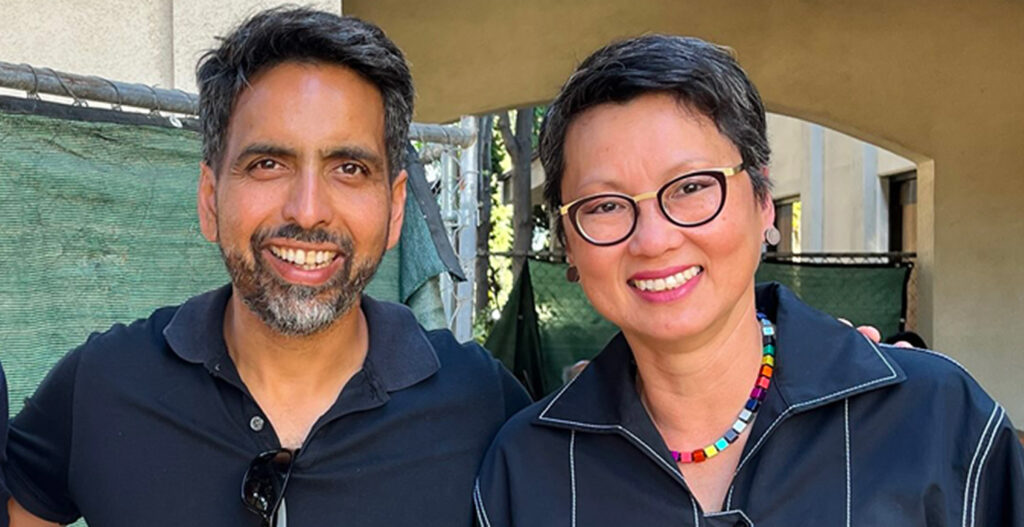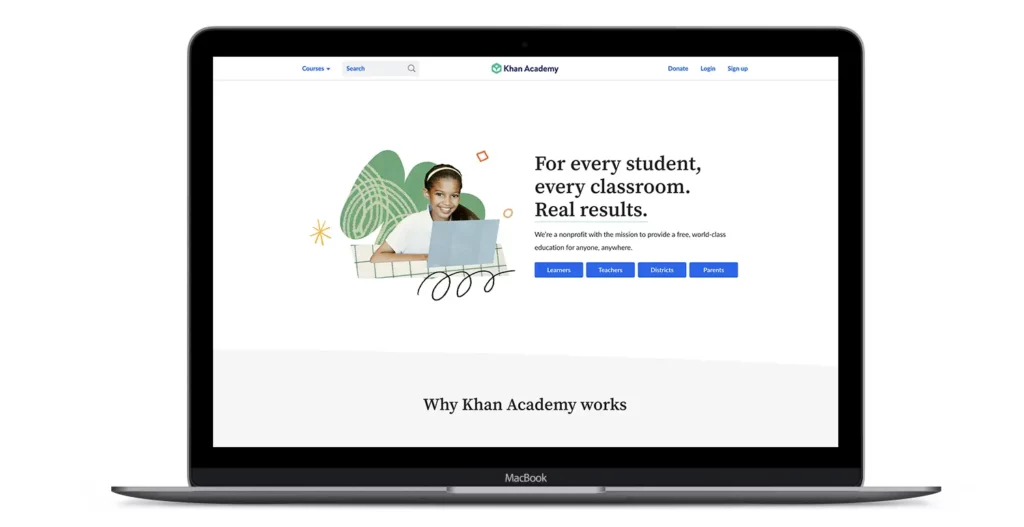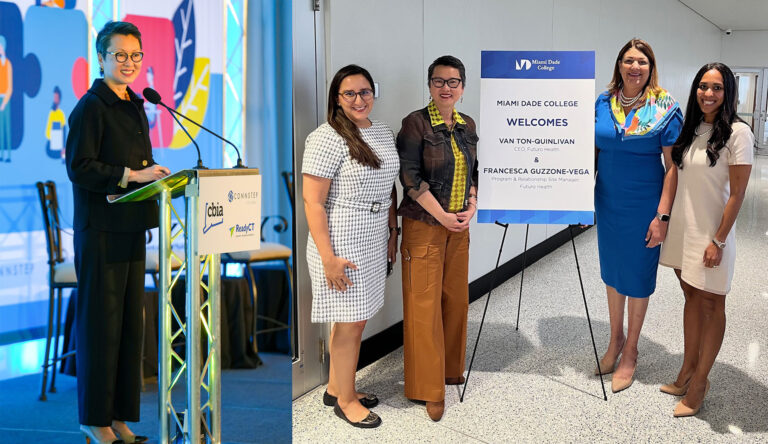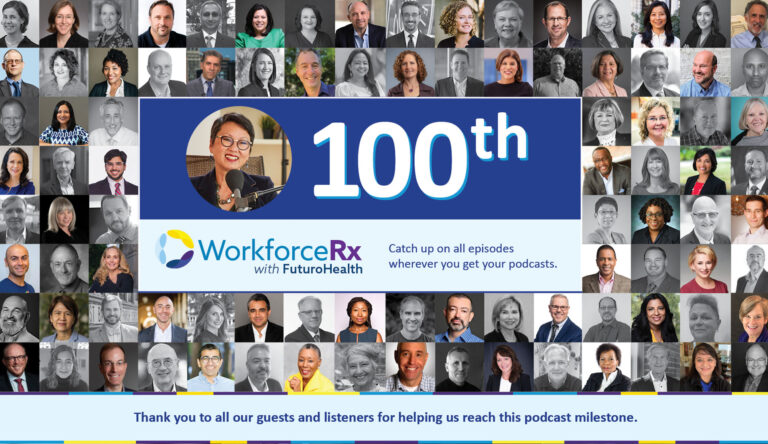
I have the privilege of meeting many leading experts and innovators in the education and healthcare sectors in my role as CEO of Futuro Health (see some featured in my WorkforceRx podcast). Recently, I bumped into education icon, Sal Khan, in Silicon Valley. Sal is an education innovator all-star not only in my eyes but of many around the world. And, his latest creation, SchoolHouse.World.org, will infuse innovation into the college admissions process.
Sal does his global work on the second floor of a Google building in Mountain View, California. My youngest son enrolled in Sal’s experimental Khan Lab School, an in-person K-12 school located on the first floor of the same building, after the pandemic wreaked havoc with his schooling, as it did for many. Now a senior, my son is going through the college admissions process, which unfortunately in the U.S. is an all-too-stressful rite of passage.
Sal and two college admission directors hosted a discussion with students and parents. That was where I met him in-person. I had seen Sal speak over a decade earlier when he delivered a provocative keynote to a skeptical audience of national higher education leaders. I was inspired then by his notion that learning can be based on mastery rather than time-in-seat. Almost everything in higher education is anchored in the construct of time – a.k.a., the credit hour.
What Makes Sal Khan an Education Disruptor All-Star?
Mastery-based learning will no doubt become a best practice in the future landscape of workforce development as workers struggle to pace with the rate of technology ingestion. All of us will need more strategies to accelerate our attainment and demonstration of new skills.
Can we speed through what we have already mastered and spend more time on what we haven’t yet? Sal’s Khan Academy has shown what can be done. The learning tools developed in Khan Academy are used by 135+ million people from over 190 countries who pursue knowledge through mastery-based learning. Learners, upon demonstrating competency on a concept, can move ahead quicker.
The converse would also be true for learners who need more time. Student progress no longer is measured by the 50 minutes spent in the classroom and is decoupled from when the bell rings or calendar year ends.

Working the Problem Can Lead to Unintentional Innovations in Education
Back to Sal. With Khan Academy and Khan Lab School in full deployment, he is once again at work solving the dilemmas of education in novel ways. Sal now wants to provide free tutoring to the world in a new venture called SchoolHouse.World. His team had a dilemma to solve, “How do we know a person is qualified to be a tutor?” In working the problem, his team designed a process whereby applicants recorded themselves on video teaching a topic (e.g., in calculus), then submitting the recording for peer rating. Qualified submissions would earn a SchoolHouse.World certification.
Coincidentally, the pandemic came about whereupon colleges suspended their collection of standardized scores. Seeing the value of SchoolHouse.World.org certifications as a good indicator of what students knew, faculty at MIT, Georgia Tech, and the University of Chicago began accepting them in lieu of ACT and SAT scores – and, as such, introduced innovation into the archaic college admissions process.
Like the invention of the Post-Its by 3M, Sal’s innovation was accidental for he was focused on the K-12 space. Few people know that Post-It Notes were amazingly close to complete failure. In 1968, Dr. Spencer Silver, a chemist at 3M Company, invented a unique, low-tack adhesive that would stick to things but also could be repositioned multiple times. He was trying to invent a super-strong adhesive, but he came up with a super-weak one instead. 3M shelved the discovery for five years, until an opportunity arose for its use bookmarking and highlighting textbook pages without damaging them. Fast forward 50 years, and Post-It Notes can be found in offices and meeting rooms worldwide.
Embracing the Needed Innovation to Higher Education Practices
The story behind the invention of Post-It Notes is a favorite example of how experimentation often leads to unplanned discoveries. Sal’s college admissions innovation came about when he sought a solution for something else.
Since launching in 2020, Futuro Health benefitted from having a whiteboard in which to approach developing the allied health workforce. We have uncovered novel ways to organize community organizations and unions to efficiently scout diverse adults and being them onto education paths. At a moment in time when higher education enrollment nose-dived across the nation, especially in 2-year institutions, Futuro Health has met and exceeded our goals for how many students we serve each year. We are infusing some of those learnings into our collaboration with our public institution partners, including California community college, California State University and University of California brethren, who join us in a federal grant to grow the state’s public health IT workforce called California Consortium for Public Health IT (CCPHIT).
As I look back on my recent encounter with Sal Khan, I am reminded that innovations come about in so many ways.
Futuro Health CEO Van Ton-Quinlivan is a nationally recognized expert in workforce development. Her distinguished career spans the private, public and nonprofit sectors. She is a White House Champion of Change and California Steward Leader, and formerly served as Executive Vice Chancellor of the California Community Colleges.



